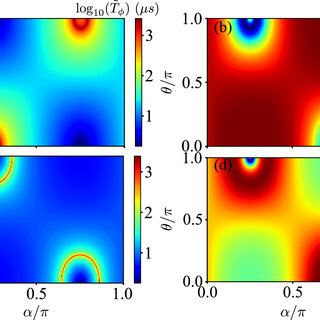
Next-generation quantum devices require highly error-prone configurations. In response to this need, AQT researchers at Berkeley Lab's state-of-the-art collaborative research laboratory have developed a new quantum processor design based on "Fluxonium" qubits. Fluxonium qubits can outperform commonly used superconducting qubits and open a promising path to universal fault-tolerant quantum computers.
In collaboration with researchers from the University of California, Berkeley, and Yale, the AQT team is pioneering systematic theoretical studies on the design of high-performance fluxonium qubits and providing practical recommendations for adapting and building state-of-the-art hardware. Realizing the potential of quantum computing. . The results were published in the journal PRX Quantum .
At the forefront of superconductor processing
Superconducting quantum processors consist of multiple qubits with different transition frequencies that enable precise control of individual qubits and their interactions. Transmon qubits, one of the most widely used in the superconducting processor industry, typically have low anharmonicity. Anharmonicity is the difference between the respective transition frequencies in the qubits. Low anharmonicity contributes to the spectral density (when the qubit frequencies are correlated with each other), which makes the processor difficult to control as the qubit frequencies are tightly controlled.
Conversely, high anharmonicity allows researchers to better control the qubit, because there is less overlap between the frequencies that drive the qubit and the frequencies that drive the qubit to higher energy levels. Fluxonium qubits have intrinsic advantages for complex superconducting processors such as B. high anharmonicity, long coherence time, and easy control.
Building on AQT's strong R&D history in superconducting circuits, the team behind the Fluxonium-based architecture focuses on the scalability and adaptability of core processor components, a number of parameters that allow researchers to improve the runtime and reliability of quantum-enhancer circuits. . Some of these tweaks make the system easier to use. For example, researchers have proposed to control fluxonium qubits at low frequency (1 GHz) by using microwaves directly generated by generators of random electric currents. This practical approach allows researchers to dynamically design processors and control multiple qubits.
Flexible Fluxonium Qubit Approach for Large Devices
Long Bi Nguyen is a project scientist at AQT and lead author of the publication. Nguyen began researching alternative superconducting qubits as a graduate student at the University of Maryland in collaboration with Professor Vladimir Manucharian. Manucharyan introduced fluxonium qubits to the field a decade ago, and in 2019, Nguyen demonstrated the possibility of longer entanglement using fluxonium rings. The Fluxonium circuit consists of three components: a capacitor, a Josephson junction, and a superinductor, which helps to reject magnetic flux noise, a typical source of unwanted interference that affects overpowered qubits and causes imbalance.
"I've always wanted to learn new physics and I focused on Fluxonium because it seemed like a better alternative to transmons at the time. It had three circuit components that I could play with to get the spectrum I wanted. He could design it. Avoid 'inconsistencies due to material defects.'" And I recently realized that adding fluxonium could be more cost-effective because the interactions between individual qubits can be demonstrated with high precision,” explains Nguyen.
To evaluate and verify the performance of the proposed Fluxonium design, the AQT team collaborated with the paper's researchers to simulate two types of programmable quantum logic gates: NIE (cross-resonance controlled NIE) and AC-controlled differential. Stark-Z (CZ). The high fidelity simulation of the gates in the proposed qubit measurement range validates the team's hopes for the proposed design.
"Using standard methods and practices for using variable-frequency logic gates, we present a potential way to build fluxonium processors. We hope for further research and development in fluxonium and superconducting qubit options for next-generation devices for quantum information processing." Nguyen said.
For more information : Long B. Nguyen et al, Blueprint for a High-Performance Fluxonium Quantum Processor, PRX Quantum (2023). DOI: 10.1103/PRXQuantum.3.037001. link.aps.org/doi/10.1103/PRXQuantum.3.037001
Retrieved from: Fluxonium Processors Quantum Computing Innovation (2023 April 11) Retrieved April 13, 2023 from https://phys.org/news/2023-04-quantum-fluxonium-processors.html.
This document is protected by copyright. No part may be reproduced without written permission, subject to fair treatment for personal study or research purposes. The content is provided for informational purposes only.
